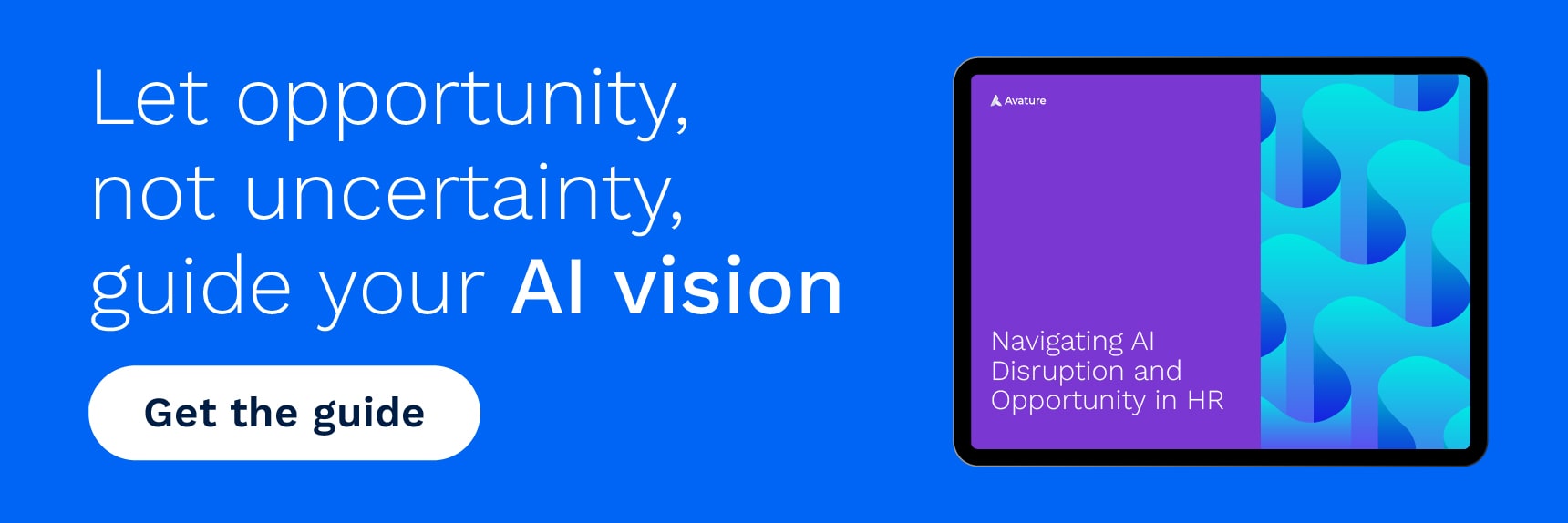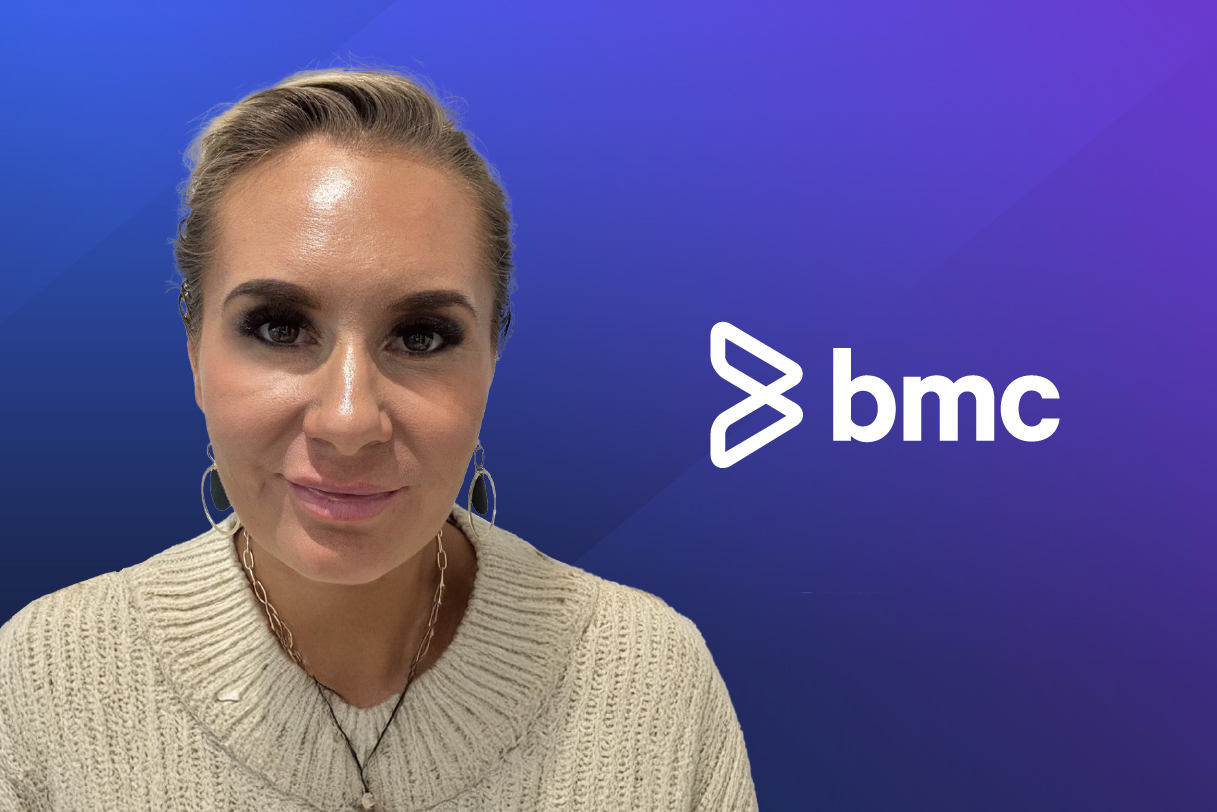During this year’s #AvatureUpfront conference in Melbourne, Avature CEO, Dimitri Boylan, engaged in a multi-layered exchange with Stephanie Edwards, Chief Digital Officer and Global Head of Enterprise Solutions at Hudson RPO, a global firm with deep roots in Asia-Pacific.
While Edwards brought deep insight from her work across the region, her reflections tap into broader truths about the evolving world of work, from the limitations of one-size-fits-all talent solutions to the transformative role of AI and automation in workforce planning and what it takes to scale talent strategies globally without losing sight of local realities.
Whether you’re a CHRO planning a multinational rollout or a tech leader navigating digital transformation in talent acquisition, this episode offers a practical roadmap for aligning global ambition with local execution. Let’s begin.
Adapting Enterprise Talent Strategies for Cultural and Regional Differences
Many global organizations strive to build a unified, end-to-end talent strategy, but balancing that ambition with the need for local relevance remains one of the biggest challenges facing talent leaders today.
Stephanie Edwards captured this tension well. Drawing on the unique complexities of the APAC region, she offered powerful insights into why successful talent strategies must respect cultural and market-specific nuances—and how organizations can build in flexibility without sacrificing global consistency. Her practical lessons resonate far beyond APAC, underscoring how understanding local market dynamics is essential to keeping talent strategies relevant and effective.
She began by highlighting a common misconception: though Australia is part of APAC geographically, its business dynamics often align more with the UK and US. Applying an “Australian lens” to the entire region can be misleading. True complexity lies in markets like China and Japan, now compounded by rising players such as Malaysia and India. This serves as a reminder that broad generalizations risk missing crucial local nuances.
Being “the most dynamic and multicultural market in the world,” as Boylan described it, the APAC region offers immense opportunity—but only for those companies that are willing to adapt. As Edwards noted, a common question she encounters is: How do we globalize and tap into a new region’s potential?
Every trip that I’ve taken to Japan and China in the last 24 months, that has been the number one topic. ‘We understand this market, but how do we globalize? And not just in terms of diversifying revenue, but how do we do business outside of Japan or China? We’re very profitable, but how do we apply this model to ensure that we are sustaining ourselves into the future?’”
Stephanie Edwards
Chief Digital Officer and Global Head of Enterprise Solutions at Hudson RPO
Understanding these nuances is critical to succeed in any diverse market, and effective leadership plays a central role. While selecting the right talent to lead expansion efforts is always essential, relying solely on homegrown leaders is often insufficient in markets where deep local insight and cultural understanding are required.
There’s that pattern of bringing people from your own market, your senior leadership, and moving some of them over into these other countries to manage the business. But that only goes so far. It’s important to identify leadership that understands culturally what’s going on on the ground in a particular market.”
Dimitri Boylan
Avature Founder and CEO
APAC’s Appetite for Innovation Without Hesitation
The need for local understanding goes beyond culture and leadership—it also fundamentally shapes how technology is perceived and adopted.
APAC, for example, is “very technically advanced but spends less time talking about it.” Across the region, there’s an implicit assumption that technology will simply be used; almost no debate, just action. This contrasts with markets like Europe, where regulatory concerns frequently dominate technology discussions, with artificial intelligence as the latest example.
While fewer constraints can accelerate adoption, Edwards noted that APAC’s quick uptake of new tools stems from a drive to stay competitive. This has cultivated a more experimental, less risk-averse environment.
A fear of being left behind prompts a curiosity to understand technology and say ‘I’m open to that. I’m eager to test, trial and adopt.’ And so I agree that there’s more of an appetite.”
Stephanie Edwards
Chief Digital Officer and Global Head of Enterprise Solutions at Hudson RPO
But the appetite for innovation must be channeled intentionally, whether in APAC or anywhere else. Across industries and regions, most organizations are grappling with the same challenge: how to navigate the buzz surrounding automation and agentic AI and focus on what truly matters.
Edwards advocates for first-principles thinking, a problem-solving approach championed by tech leaders like Elon Musk. This mindset involves breaking problems down to their core components and reasoning up from there. Rather than chasing the latest tool or trend, the key is to start with the fundamentals: What problem are we solving and how will this solution help us solve it? “That seems to be a much more digestible approach for clients,” she noted.
Why Cookie-Cutter Global Rollouts Fail in Talent Tech
Putting localization into practice means taking an equally nuanced approach to the technology supporting recruiting and talent management across markets. Here, Edwards explained that “a very cookie-cutter approach to a global solution will just not work.” From data management requirements to cultural differences and regional operating models, successful talent strategies demand systems that reflect these local realities.
To illustrate, Dimitri Boylan shared a common challenge with global customers entering the Chinese market: the critical role of WeChat in local recruiting. Despite the platform’s dominance, organizations often hesitate to integrate it into their strategy, whether due to unfamiliarity or resistance to adding new tools. Overlooking this channel can have serious consequences, from missed talent connections to low system adoption.
We want our users everywhere in the world to succeed. We don’t want a pocket of users who can’t succeed in their market.’ So we look at that and say, ‘We need to make sure that they can advertise on WeChat. Otherwise, they won’t get any candidates, and if they don’t get any candidates, they won’t use the system. And then the customer will come back to us and say, ‘The adoption is low over here.'”
Dimitri Boylan
Avature Founder and CEO
This example underscores a broader lesson relevant to all global organizations: regional teams should have enough flexibility to customize solutions according to local needs. Without this, even the most sophisticated global systems risk falling short of delivering value on the ground. “I feel, sometimes, they’re afraid to allow that solution to be more customized to the market,” he concluded.
Balancing Standardization With Local Customization in Global HR Systems
Boylan went on to explain that this is likely rooted in an outdated mindset that he described as the “technology as defense” model, where tools were standardized globally to squeeze out minor efficiency gains.
But today’s landscape is different and modern technology is far more advanced and adaptable. Instead of enforcing a one-size-fits-all model, we live in the era of “technology as offense,” where systems can be customized and support companies in gaining a competitive edge in new markets.
The right, flexible technology makes this customized approach possible at scale by supporting multiple layers of configuration:
- The platform can first be configured to align with the broader business.
- From there, regional teams can adjust settings to reflect local market needs.
- Lastly, individual users can further tailor the system to their specific tasks.
Importantly, if all of this remains within a single platform, the benefits go far beyond staying globally aligned while locally effective:
If you have all three layers of configuration and you still have it all in one platform where all the data is in one place and you have the ability to roll up the reporting, then you’re actually in a pretty good situation.”
Dimitri Boylan
Avature Founder and CEO
Echoing the importance of taking a granular, region-specific approach, Edwards underlined the need to truly understand the audience, whether candidates or employees, in order to design effective solutions.
She described this process as almost diagnostic, involving everything from knowing which devices people use, their preferred language and when they’re most likely to apply, to rethinking the entire experience and whether certain requirements make sense for a specific role or segment.
The blueprint of whatever solutions are designed for a global client needs to be highly customized to the region, but even more hyper-personalized to the candidates you’re trying to engage and your existing workforce. Otherwise, the adoption after year one, after the big change management program, it’s just not going to do what it had initially intended to.”
Stephanie Edwards
Chief Digital Officer and Global Head of Enterprise Solutions at Hudson RPO
The Evolving Role of Technology in Shaping Workforce Strategies
The recent wave of trade policy changes has pushed many companies to rethink their manufacturing and supply strategies. However, what began as a geographic reconsideration—driven largely by financial margins—has evolved into an opportunity to reexamine traditional work models.
Organizations are moving beyond conventional approaches that rely heavily on offshoring and headcount, instead exploring how advanced automation and AI can reshape how and where work gets done—and where human capability delivers the greatest value.
Clients will say, ‘I’ve got to talk to them about their business requirements.’ And I’m like, ‘No, you have to re-engineer how work is done and not talk about how many heads you need in Japan, in China, but really just unbundle the nature of the role, the skills, the tasks and start from there.’ Asia is primed for that because there has been a heavy reliance on offshoring. But I’m seeing a significant move away from some of that and a push for more transformative AI-enabled-type solutions for their workforce.”
Stephanie Edwards
Chief Digital Officer and Global Head of Enterprise Solutions at Hudson RPO
This shift is already leading to leaner workforces, particularly in administrative and junior roles. But it’s not just about reducing headcount and doing more with less. By bringing talent closer to the business core, companies are gaining agility and the much-needed ability to realign quickly as priorities evolve.
You can pull people closer to your business, so it becomes more agile and flexible because the people are more integrated into your business. The people in these [offshore] service centers were not integrated into the business. As long as the business was very static, that was okay. But now that business is really changing so quickly, it’s looking difficult to get those types of places to respond because they don’t really feel the input from the business.”
Dimitri Boylan
Avature Founder and CEO
Entrepreneurial Leaders Are Changing HR From Within
While the disruption caused by technological advancements is significant, not all parts of organizations are evolving at the same pace, with customer service, sales and marketing adapting quicker, whereas HR seems to be lagging behind. “It’s the same as the adoption of electric cars,” Edwards explained. “The technology may be available, but what adoption looks like throughout an organization shows up in different ways.”
HR’s slower adoption curve likely reflects the function’s inherent complexity rather than resistance. As technology continues to gain ground, HR and talent teams face the unique challenge of using it in ways that truly elevate the human element.
Just as transformation unfolds unevenly across business functions, something similar seems to be happening across industries. For Edwards, leadership plays a key role in setting the pace of change.
A new wave of leaders, many of whom are making lateral moves across sectors, are bringing with them more entrepreneurial mindsets and a higher tolerance for risk. By stepping into more traditional environments, they’re helping challenge the status quo and accelerate transformation.
I am seeing interesting lateral moves, leaders coming out of different sectors and moving into financial services and governments across the globe, bringing with them a much more entrepreneurial [mindset], a better understanding of that sort of risk environment to help and support some of those larger companies to transform.”
Stephanie Edwards
Chief Digital Officer and Global Head of Enterprise Solutions at Hudson RPO
It’s no coincidence that entrepreneurial thinking continues to surface in conversations on The Talent Transformation Podcast (tune in to our episode with Unifi for more on the topic). As disruption becomes the new norm, the ability to embrace uncertainty may well define the must-have leadership skill of our time.
The art of business success today is how to navigate disruption. It’s the game that we’re playing.”
Dimitri Boylan
Avature Founder and CEO
Building on this mindset, Edwards candidly shared her expectations for her role at Hudson RPO:
That’s probably my mandate. Not BAU, not traditional RPOs, not traditional recruitment. It is ‘let’s start from scratch and rewrite the script here on enterprise talent acquisition and talent management practices and leapfrog that.’”
Stephanie Edwards
Chief Digital Officer and Global Head of Enterprise Solutions at Hudson RPO
As excited as she is for the future, she also offered a reflection that could read like strategic advice for fellow HR leaders navigating technological change, executive buy-in and the constant need to demonstrate value.
Even though reinvention feels urgent in a market that hasn’t caught its breath since the pandemic, radical overhauls aren’t always realistic. A more achievable path lies in breaking transformation into smaller, high-impact initiatives, recognizing that HR transformation must earn its place on the CPO’s and CIO’s priority list.
In this context, HR’s timing and messaging are critical. The impact of talent transformation ripples far beyond HR itself, translating into measurable business value from efficiency gains to cost savings to stronger operational capabilities. Making the case for reinvention shouldn’t just be HR’s goal but an imperative driven by vision and intentionality.
Candidate Behavior and a New Hiring Game
As the talent landscape evolves, so do candidates’ behaviors, skill sets and the tools at their disposal. The rapid rise of AI and the most tech-savvy generation ever entering the workforce are certainly keeping HR teams on their toes.
There are other tools that are available to candidates now. I heard one last week from a big bank in the US where they were seeing an increase in number of applications from the post-school/university leaver segment because they have an understanding of how to reverse-engineer the technology to not only go through and manually apply for ten jobs, but apply for 100,000 jobs.”
Stephanie Edwards
Chief Digital Officer and Global Head of Enterprise Solutions at Hudson RPO
This sheer volume of applications alone can overwhelm even the most experienced recruiting teams, but it is only one part of the challenge they face. Edwards referenced a rising trend in markets like India, where psychometric tests are sometimes completed by someone other than the actual candidates. Boylan echoed this concern, citing two recent customer cases: one involving applications that appear to be started and completed by different people, and another highlighting the risk of malicious employees. Both examples underscore the growing need for stronger identity verification throughout the hiring process.
That really boils down to that dimension of, on the platform, how do you know who is who? It’s not just asking somebody how many years of job experience they have anymore. It’s got to become much more sophisticated.”
Dimitri Boylan
Avature Founder and CEO
As the behavior of new generations of candidates evolves as rapidly as the technology available to them, Edwards acknowledged that “it’s a completely new game, and the technology has to work differently in terms of sourcing and screening.”
Moving forward, the landscape will no longer be just about scale or efficiency but also about agility and a profound level of insight. For HR organizations looking to stay ahead, this means being empowered, not just supported, by the right mindset, vision and technology.
A continuously improving platform is actually a requirement because if you were running on a platform with the code of three years ago, you’re going to be at a disadvantage because the candidates have more code available to them. The state actors have more code available to them. And everybody has a different standard anyway. Users’ standards keep jumping up as well. So technology has to really keep pace for you to be effective on the ground.”
Dimitri Boylan
Avature Founder and CEO



